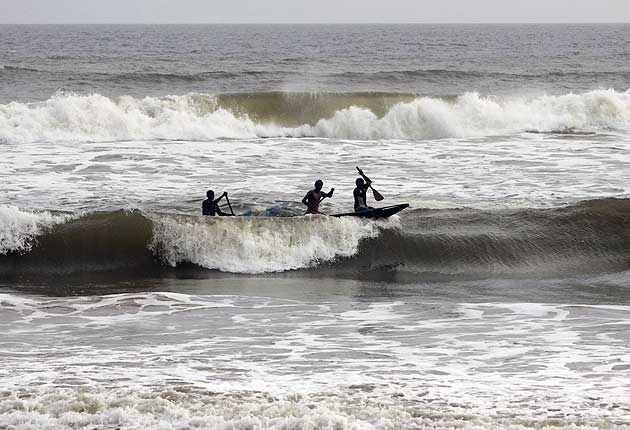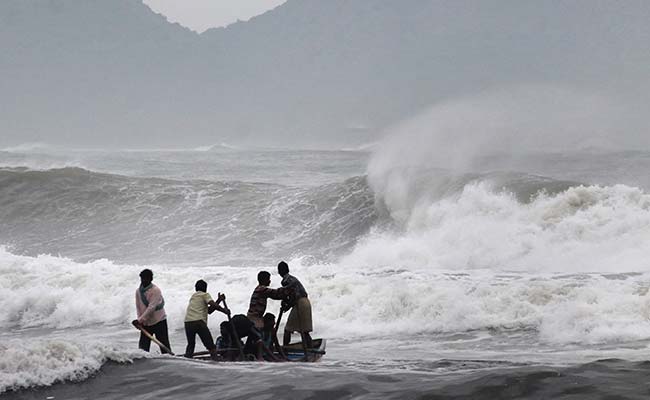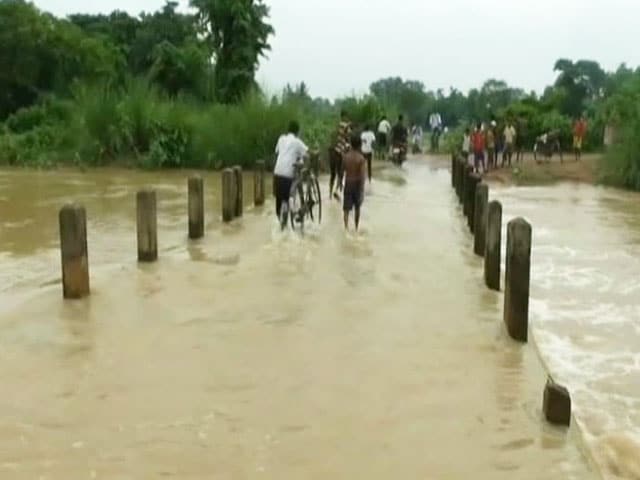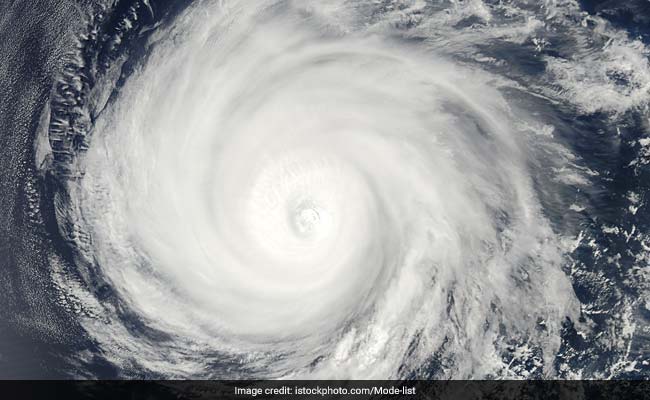NDTV Sites

World Environment Day Special: Sundarbans – The Land Of Tides, Tigers And Threats
The Sundarbans – lies on the delta of the Ganges, Brahmaputra and Meghna rivers on the Bay of Bengal. According to the World Wildlife Fund India, this active delta region is among the largest in the world, measuring about 40,000 sq km. A UNESCO World Heritage Site, Sundarbans is one of the world’s largest contiguous mangrove forest spread over an area of 10,000 square kilometers, 60 per cent of which lies in Bangladesh and the rest in India. According to Sundarban National park India Official website, the 4000 sq. km of Sundarbans is on the Indian side has 102 islands, out of which 54 are inhabited and the rest are covered with forest.
Also Read: World Environment Day 2022: Only One Earth Is The Theme This Year
The unique landscape of Sundarbans with its intricate tidal waterways, rivers, creeks, backwaters, low lying islands, swamps and stretches of mudflats, provides a diverse habitat for various species of plants and animals, be it terrestrial or aquatic.
Home to the endangered Royal Bengal Tiger, it is the only mangrove tiger habitat in the world. According to World Heritage Convention (UNESCO), apart from the tiger, some of the other threatened species of the area are estuarine crocodile, Gangetic Dolphin, Olive Ridley Turtle and Water Monitor Lizard.
One of the reasons why it is tagged as the UNESCO world heritage site is because it is the only remaining habitat in the lower Bengal Basin, which has a wide variety of faunal species, states World Heritage Convention (UNESCO).

According to World Heritage Convention (UNESCO), Sundarban’s exceptional biodiversity is expressed in a wide range of flora with 334 plant species and fauna with 693 species
Sundarbans gets its name from Sundari, the local name of the mangrove species, Heritierafomes Buch-Ham. (ME). Sundari means beautiful in Bangla. Broadly, there are two types of mangroves – freshwater loving and saltwater loving. Species like Sundari and Nipa love fresh water whereas Avicennia (grey mangrove or white mangrove) can sustain high salinity. Due to the lack of availability of freshwater in Indian Sundarbans, species like Sundari, which used to be dominant specie, is disappearing. Gradually, all fresh water loving mangrove species are now getting replaced with the ones that can withstand salinity.
Also Read: #OnlyOneEarth: Stark Facts About Environment You Must Know


Sundarbans On The Frontlines Of Climate Change
Slowly but steadily climate change is transforming the reality of Sundarbans. Home to a large human population - 4.5 million in India, as per World Wildlife Fund, the consequences of climate change are hitting lives and livelihoods hard. With the ocean swallowing up land in the world’s largest mangrove forest, humans and tigers are being squeezed into an ever-shrinking space. Flooding of low-lying deltas, the retreat of shorelines, salinisation and acidification of soils, and changes in the water table, Sundarbans is dealing with all kinds of dire consequences. Watch: World Environment Day Special: A Ground Report From Sundarbans According to World Wildlife Fund, four islands have vanished in Sundarbans due to the effects of climate change in the last 25 years — Bedford, Lohachara, Kabasgadi, and Suparibhanga. Lohachara became well-known as the world's first inhabited island to be submerged in 2006. Read More: How Climatic Change Is Depleting Lives in Sundarbans
Islands That Have Vanished In Sundarbans
-
Bedford
-
Lohachara
-
Kabasgadi
-
Suparibhanga
Sagar, a delta island with a population of 200,000 in the Bay of Bengal has lost almost 12 per cent of its shoreline to coastal erosion in the last four decades, according to NASA Landsat satellite imagery. The region today serves as a prominent climate change “hotspot” for climate researchers.
NASA Landsat satellite imagery also shows that the sea level has risen in the Sundarbans by an average of 3 centimeters (1.2 inches) a year, over the past two decades, leading to one of the fastest rates of coastal erosion in the world.



Why Saving The Natural Heritage Of Sundarbans Is Important
According to the report, ‘The Benefits of Natural World Heritage’ by the International Union for Conservation of Nature (IUCN) and United Nations Environment Programme (UNEP), natural World Heritage sites like Sundarbans provide many benefits that contribute significantly to human well-being. For example, the forests found in World Heritage sites, like Sundarbans along with others across the tropical regions store 5.7 billion tons of carbon, and two-thirds of natural sites on the UNESCO World Heritage List are crucial sources of water for millions of people.
The Sundarbans also serve as a natural buffer against cyclones in the Bay of Bengal, which receives 10 percent of the world’s tropical cyclones, according to the World Heritage Committee report. The report adds, if not for Sundarbans, India and Bangladesh would have had to spend $300 million on just protective flood infrastructures like embankments and seawalls.

Frequency Of Cyclones To Hit Sundarbans Is Increasing
-
Sidr (2007)
-
Aila (2009)
-
Phailin (2013)
-
Hudhud (2014)
-
Komen (2015)
-
Mora (2017)
-
Titli (2018)
-
Fani (May 2019)
-
Bulbul (November 2019)
-
Amphan (2020)
-
Yaas (May 2021)
-
Jawad (December 2021)
According to the analysis, in last three years alone, Sundarbans was impacted by one major cyclone after another — Bulbul in 2019, Amphan in 2020, Yaas and Jawad in 2021. The Council on Energy, Environment and Water – a think tank based in Delhi states that the frequency of cyclones in 15 West Bengal districts, has increased five-fold between 1970 and 2019. It also states that areas in and around the Sundarbans are an “extreme climate hotspot” due to cyclone impacts. IMD states that the cyclones in Arabian sea and Bay of Bengal has risen by 11 per cent in last decade, with an alarming 32 per cent increase in the last five years. The IMD analysis that has been studying West Bengal’s South 24 Parganas district, within which the larger share of the Sundarbans is located, also mentions that the district is impacted by cyclones most frequently among any Indian districts. The Consequences of Frequent Cyclones: According to experts, almost all types of communicable diseases primarily related to respiratory and gastro-intestinal systems are highly prevalent in Sundarbans. Prof Barun Kanjilal of The Indian Institute of Health Management Research (IIHMR), who has been studying the region, was quoted by a news agency PTI saying that children in Sundarbans are the worst affected with chronic malnutrition, diarrhoea and other common childhood illnesses. He said, “Transient climatic shocks have made the child health worse through the pathway of chronic poverty, low resilience, physical and social barriers to health seeking as well as ineffective service delivery system.” He explained that when climate events like cyclones destroy crops, lands or houses, it affects the food security of the people, ultimately causing undernutrition through reduction in calorie intake. In addition to this is the problem of disease outbreaks, which are caused with instances of coastal erosion, flooding and cyclone. Read More: How Has Climate Change Impacted Food Security In India’s Sundarbans After Cyclone Aila in 2009, Dr Pradeep Vyas, IFS (Retired), Ex-Chief Wildlife Warden, West Bengal did a study and found that even after a year of the cyclone, 23 per cent of the agricultural land could not be cultivated. As a result, people had to move from agriculture to aquaculture and enter forest areas for their livelihood.

Ground Report From Sundarbans On The Health Impact Of Climate Change
Women wading through waist and some even neck deep in brackish water, dragging rectangular nets in the rivers and creeks, is a common sight in the Indian Sundarbans. These women are involved in fishing and crab and prawn collection for living. Over the years, the saline water has increased in the Indian counterpart of Sundarbans due to three main reasons - the eastward shift of the mouth of the Ganges; lack of freshwater; rise in sea level. Unaware of the health implications of spending hours in saline water, these women risk their lives and develop skin diseases and fungal lesions.
Watch: Rising Salinity And Sea Level Pose Multiple Health Challenges




How Locals Are Working Towards Saving Sundarbans And Its People
31-year-old Aparna Dhara lives in Lakshmipur village of Kakdwip Block in Indian Sundarbans with her husband, two sons (16 and 12-year-old), and in-laws. Aparna and her husband are primarily paddy farmers, who also grow some vegetables and own a small shop to sell poultry products. Since Cyclone Amphan in May 2020, Aparna’s house has been destroyed twice. She says, “Earlier there were no trees around our house or on the banks. As a result, high tides would break the banks resulting in water entering our houses and leading to huge devastation.”
But, today, Aparna along with other local women has planted trees and grown a little forest that now protects river embankments. Since the salinity in their area is high, women have planted mangroves like Avicennia (grey mangrove or white mangrove) that can tolerate saline water.
Read More: Climate Change In Sundarbans: Loss Of Mangroves, Adaptation And Mitigation

“If you wish to know the health hazards faced by Sundarbans, you must understand the history and geography of the place first”, says 69-year-old Dr Arunoday Mondal, a resident of Kolkata’s Lake Town. Dr Mondal won the Padma Shri award in 2020 for treating patients free of cost for over two decades in remote areas of Sundarbans. Dr Mondal treats 12,000 patients on an average every year and provides them free medicines at a charitable hospital established by him in Hingalganj area in Sundarbans near the India-Bangladesh border. The medical practitioner from West Bengal travels to Hingalganj, a six hours journey of around 90 km from his Kolkata residence, twice a week to “fill the gaps of treatment at government hospitals”.




























